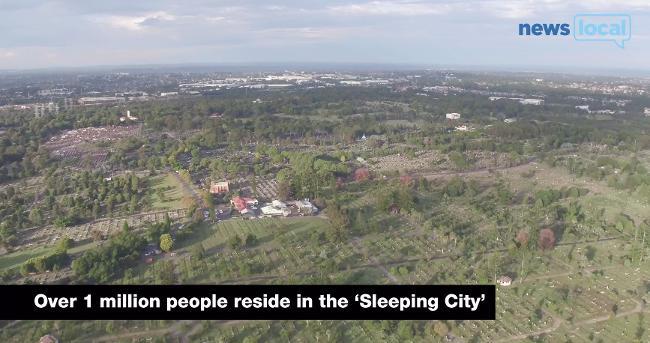NSW Government flags plan for 25-year rents for grave plots to make room in crowded cemeteries
OUR cemeteries are full but a radical plan could see bones dug up from the ground to make room for the newly deceased.

IT MAY not be something we spend a lot of time dwelling on but when we die, and if we’re buried, that’s where we remain right?
Well, not according to a new plan being considered by the New South Wales Government.
Under the proposal, the dead may have to rent their graves for 25 years at a time.
Just like a unit, if you don’t renew the contract, you could be turfed out. The plot would then be reused with the previous remains moved to a so-called bone room.
Even gravestones and memorials could end up on the scrapheap.
The problem is designed to tackle the growing problem of cemeteries chock-a-block with bodies.

The Cemeteries and Crematoria Amendment Regulation 2017, which is on public display until December 22, would give families a new option of a 25-year rental period known as a “renewable internment right”.
This would be a cheaper option than a “perpetual internment right” where the remains are undisturbed forever.
A year before the rental period expired cemeteries would have to “telephone, post and email” family members, or if that fails, use Facebook and Twitter, to see if they want to continue paying for the patch of soil.
The grave rental could be renewed each time for a maximum of 99 years.
If the family declined to renew the grave, or couldn’t be found, then after two years the remain and memorial could be removed and the plot reused.
The remains would be rehoused in somewhat tighter premises in an ossuary house, otherwise known as a “bone room”.

“Before an interment site is re-used the cemetery operator must ensure that any bodily remains are placed in an ossuary box and reinterred or placed in an ossuary house,” a statement accompanying the proposed change states.
Memorials and cremated remains would be returned to the families, if they could be found.
Existing graves wouldn’t be affected.
Crown trusts, which manage land owned by the NSW Government, conduct about a third of the state’s burials. But in metropolitan Sydney the figure is far higher at about 69 per cent.
“The need for government action is driven by inconsistent and dispersed regulation, inconsistent record keeping, and the need for sustainable solutions in response to a scarcity of land for cemetery purposes, particularly in the greater Sydney metropolitan area,” the documents states.
Annual deaths in NSW are predicted to double from the 2011 rates by the year 2051.
“If there is no change to current cremation and grave occupancy rates, then cemetery capacity in greater Sydney will be exhausted between the years 2051 to 2056.”
The government said doing nothing could mean less well-off families would effectively be priced out of cemeteries close to their homes meaning they wouldn’t be able to visits their loved ones that had passed on.

The changes would affect the massive Rookwood Cemetery in Lidcombe, in Sydney’s west.
Already, graveyard bosses are suggesting the bereaved consider a mausoleum as a final resting place rather then burial plots.
Rookwood General Cemeteries Reserve Trust chief executive George Simpson said while cremation was more space efficient, it was not acceptable in some cultures and religions.
“The mausoleum provides a unique alternative to earth burials and cremation, while maintaining a presence within the cemetery where people can visit and commemorate the dead,” Mr Simpson told the Canterbury-Bankstown Express in August.
“It’s also easier for the elderly or disabled to access, and as mausoleums are in a stand-alone building, it’s a safe and secure resting place.”
The cemetery has hundreds of so-called “paupers’ graves” of people unable to afford a full burial service and headstone.
Rookwood’s operations manager Kevin Morgan told news.com.au last year that paupers’ funerals were “just a normal service people can attend if they wish”.
“Sometimes there’s nobody that attends,” he said.

“If you were standing in our carpark you probably couldn’t tell the difference between a normal funeral and a destitute person’s one.”
An unclaimed person’s final resting place is dependent on instructions from “the applicant” — usually a funeral director — but most will end up “with their ashes scattered in the gardens or buried in an unmarked area”.
Mr Morgan said the bodies were buried unless the deceased’s identity is known and they signed a form when alive to authorise and request cremation.
Most pauper graves had “no headstone or anything”, he said, and were located in a grassy public section area of most cemeteries.
Some are sporadically marked with wooden cross, sticks or stakes with items including a flag on top.
In 2015, there were 121 state-funded cremations of destitute and unclaimed persons at Rookwood Cemetery.




